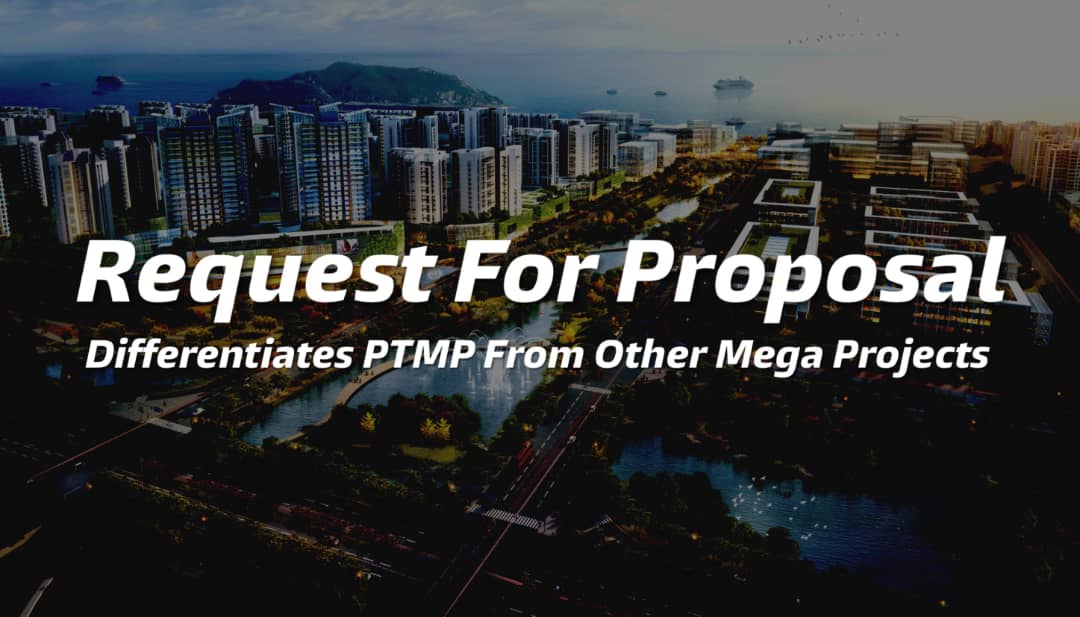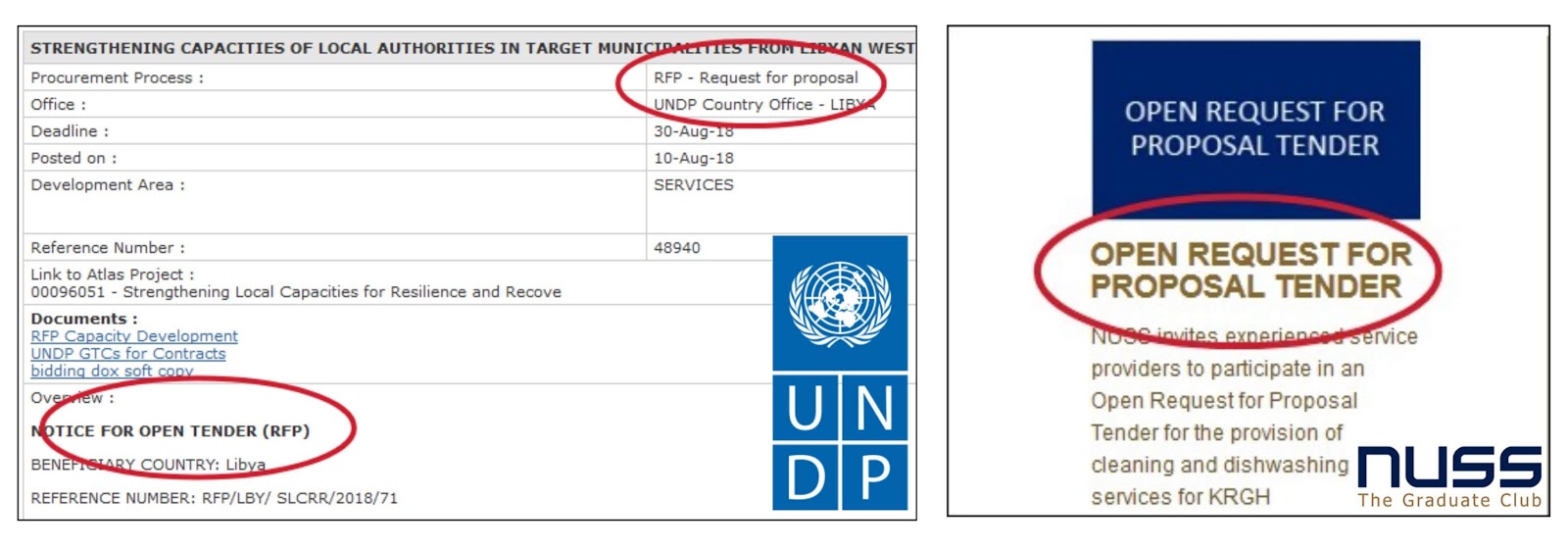
By Joshua Woo
There are some misconceptions that the PTMP is the same as other mega projects that should be reviewed, if not cancelled. Some have even lobbied all the way to the Prime Minister Office and the Council of Eminent Persons against PTMP.
These misconceptions are based on the wrong understanding about PTMP. It is therefore important for the public to know the uniqueness of PTMP in order to discern properly.
Many reasons set the PTMP apart from other mega projects. One of them is the use of an open tender process known as Request For Proposal (RFP). The RFP is a type of open tender that allows for competitive evaluation among different innovative proposals before a decision is made.
The RFP differentiates PTMP from other projects, such as the RM81 billion East Coast Rail Link (ECRL), that do not use open tender.
Regular open tender and RFP
There are several types of open tender. Each type is employed according to the scale and limitation of the project. I will only elaborate on the tender processes related to PTMP.Let's say you are hungry and desire for a burger. Regular open tender is like going to the pasar malam and coming back with the cheapest burger.
RFP on the other hand is like holding a contest, and inviting all the pasar malam burger stalls to participate. The stall that makes the tastiest burger and at the best price - but not necessarily the cheapest - gets the prize.
The main difference between the two is that price is the primary consideration in regular open tender whereas other factors come into play in RFP.
RFP allows bidders to offer their own proposal, with room for innovation. This tendering method was first employed by Penang state government in 2010 to develop landmark and restore heritage sites.
Goh Ban Lee, a former associate professor at Universiti Sains Malaysia, has this to say about RFP:
"I find the RFP idea very refreshing and interesting. If it is left to state planners or architects, it will only be one design. Generally, planners working in the civil service, as government officers, follow the normal procedures and plans and rarely take risks. However, by opening it up to the private sector, it will provide a myriad of ideas and, with competition, the bidders strive to give their best shot - and the sky is the limit to their innovation... This is new thinking, it... gives the state government the pick of the best proposals. Ultimately, the state government decides and picks on the best options offered."
Closed and open RFP
RFP can be either closed or open. Closed RFP is like holding a contest where you only invite one burger stall to participate. No need to guess who's the winner. No alternative to be considered or compared.Open RFP, on the other hand, is an invitation to any one in the market to bid or tender for the job. It is competitive, as the submitted proposals will be evaluated with alternative.
Double open RFP for PTMP
Penang state government employed open RFP twice for PTMP. Let's call this double open RFP.Double open RFP is like, you want to open a restaurant, but first you hold a contest to choose a restaurant consultant to advise you what food to serve. Say the winning consultant's choice is burger. Next you hold a second contest to choose the chef who can prepare the best burger.
For PTMP, the first open RFP was conducted to appoint a consultant to prepare an initial study of building an integrated transport infrastructure in Penang. Many criteria were set, one of which is that the project has to have a funding mechanism.
The first open RFP began on 12 March 2010 and ended on 30 April 2010. There were six companies that applied. They were AECOM Perunding Sdn Bhd, Melewar Metro Penang Sdn Bhd, Jurutera Zaaba Sdn Bhd, Systra MVA Singapore Pte Ltd, Perunding Trafik Klasik Sdn Bhd, and AJC Planning Consultants Sdn Bhd.
On 27 April 2011, the RM3.2 million project was awarded to AJC Planning Consultants Sdn Bhd, which was set up by Halcrow, Singapore Cruise Centre, and AJC. The cost was shared between the Northern Corridor Implementation Authority (NCIA) and Penang state government at RM1.5 million and RM1.7 million respectively. The consultant produced a recommendation with estimated cost of RM27 billion.
The second open RFP was carried out from 15 August 2014 to 16 December 2014, and was then extended to February 2015, looking for the Project Delivery Partner (PDP) to implement PTMP.
Fifty-five local and overseas companies expressed interest, with six submitted proposal through the open RFP. Among them were Gamuda, IJM Corp, MMC Corp Bhd, Scomi Group Bhd, and WCT. The consultancy and audit firm KPMG was appointed to provide independent evaluation of the six proposals for their technical expertise and funding model.
Based on KPMG's evaluation, on 14 August 2015, SRS Consortium (formed by Gamuda, Loh Phoy Yen Holdings, and Ideal Property Development) was appointed as the PDP.
SRS Consortium was selected after it went through the competitive open RFP.
Open RFP is internationally recognised as open tender
Despite the open and transparent nature of the RFP used in PTMP, there are deliberate allegations stating that the RFP is not open tender.For example, Lim Mah Hui and Ahmad Hilmy wrote that, "In RFP, bidders are not placed on a level playing field. The criteria for bidding under the RFP are not transparent or necessarily consistent. Clearly, RFPs are not open tenders..."
They also argued that "the best way to evaluate open tenders is for a government to follow the guidelines established by the World Bank," implying that the World Bank does not practice RFP.
They are mistaken. As mentioned above, the RFP used in PTMP is open tender. Moreover, World Bank itself uses RFP and even has its own standard guidelines for RFP. This method is used by World Bank for its global meetings management programs, data center, digital entrepreneurship, and many others.
Open RFP is sometimes used interchangeably with open tender by other international institutions such as the United Nations. In the United Nations Development Programme's procurement notice, "open tender" is bracketed as "RFP." (See the photo below.) "Open request for proposal tender" is similarly employed by a Queensland government's project and the National University of Singapore Society.

Whether it is Penang's PTMP, World Bank's guidelines, United Nations' procurement notices, Australia's project, or Singapore's institution, open RFP is internationally recognised as open tender.
Lim and Ahmad have therefore misinformed the public. Their misinformation has been taken up and disseminated by others such as the Consumers Association of Penang.
Both Lim and Ahmad may have preferred the regular open tender over against open RFP because of their concern for the cost. They want the cheapest transport infrastructure. But given our local road condition, geography, socioeconomic outlook, and other considerations, the cheapest is not necessarily the best for Penang.
Neither is the most expensive proposal the best. Therefore, the open RFP was necessary to enable the state government to evaluate different proposals with different estimated cost and suggestion, based on independent review, to decide the best for Penang.
As a competitive and transparent tendering process, open RFP allows for innovative solution at a reasonable cost. This sets apart PTMP from other mega projects.
Copyright © 2018-2021 AnakPinang. All Rights Reserved.

